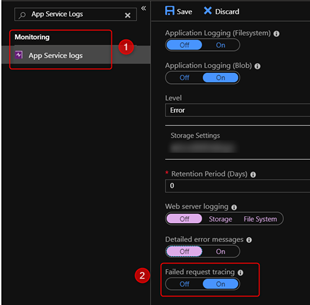Hi Collin,
Thanks for your patience.
Looks like something was stripping the header or modifying it prior to reaching the app. A FREB trace (if this is Windows) would probably be helpful in identifying if the cookie is reaching the app service. You will need to modify your web .config with the following entry.
Add path is where you can specify a specific page to reduce the number of FREB logs created for example
Failure definitions has to be set since by default when you enable FREB logging it captures status codes > 399.
<?xml version=”1.0″ encoding=”utf-8″ ?>
<configuration>
<system.web>
</system.web>
<system.webServer>
<tracing>
<traceFailedRequests>
<remove path="*" />
<add path="*">
<traceAreas>
<add provider="ASP" verbosity="Verbose" />
<add provider="ASPNET" areas="Infrastructure,Module,Page,AppServices" verbosity="Verbose" />
<add provider="ISAPI Extension" verbosity="Verbose" />
<add provider="WWW Server" areas="Authentication,Security,Filter,StaticFile,CGI,Compression,
Cache,RequestNotifications,Module,FastCGI"
verbosity="Verbose" />
</traceAreas>
<failureDefinitions statusCodes="200" />
</add>
</traceFailedRequests>
</tracing>
</system.webServer>
</configuration>

Please let us know if you have further questions

